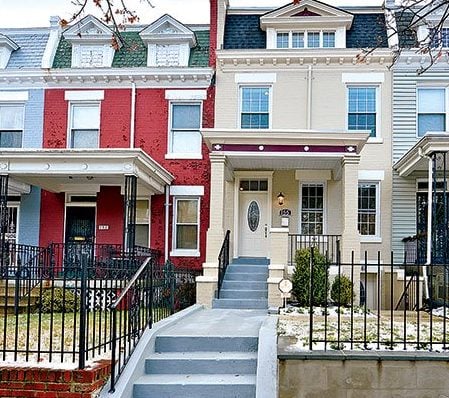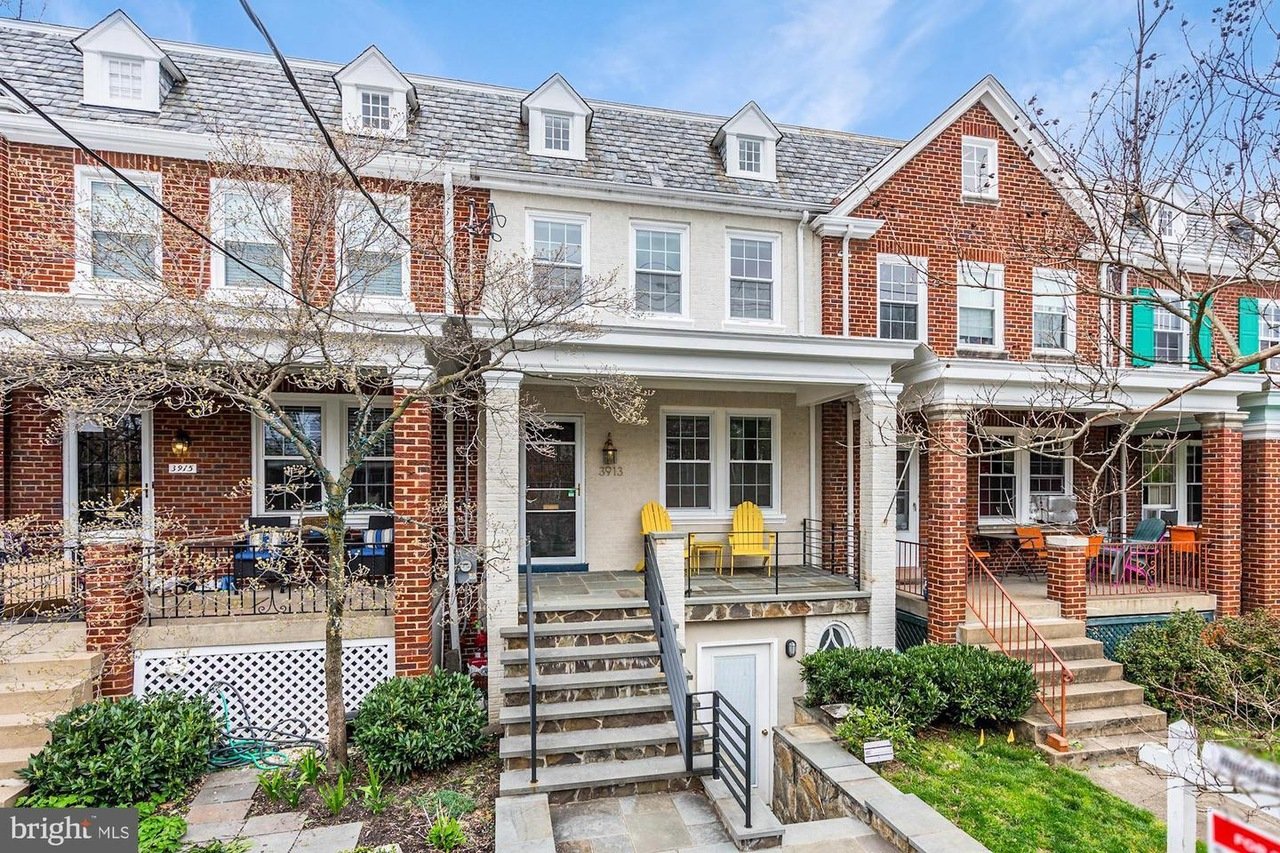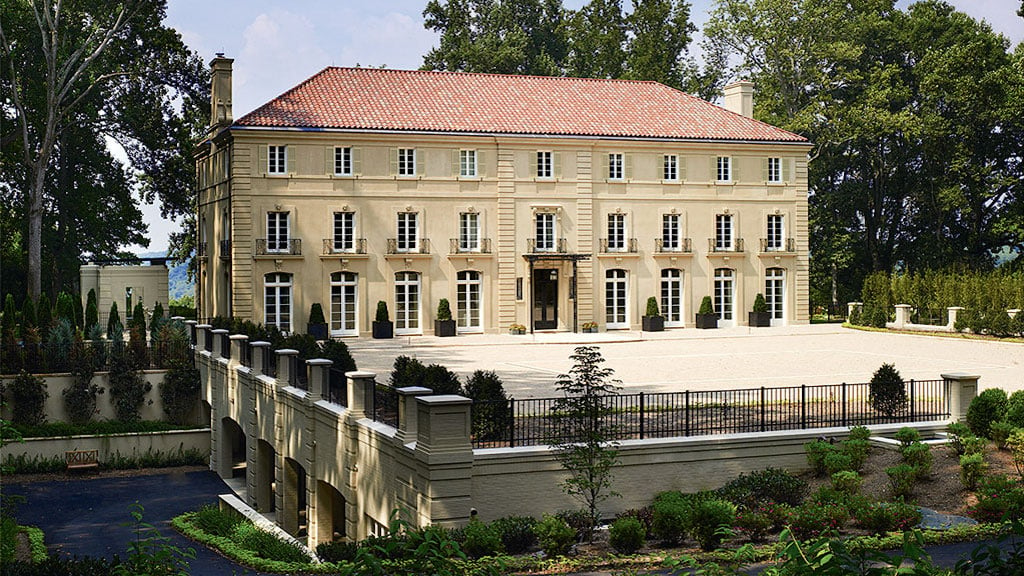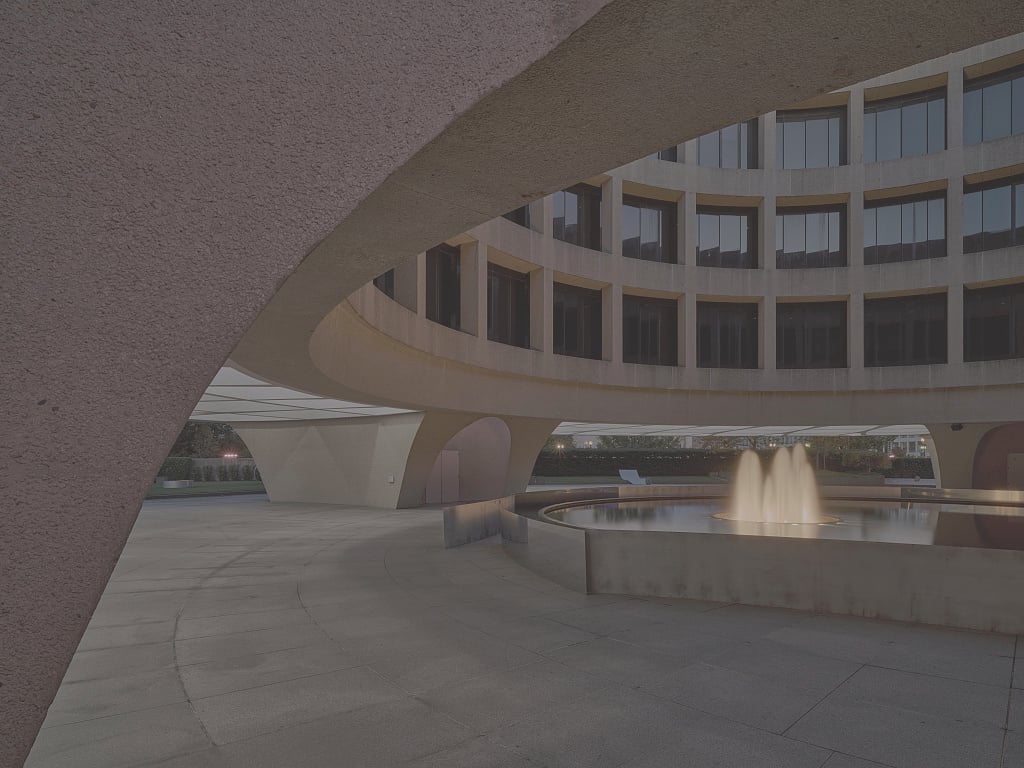Making a Spash
You could fit an entire bathroom from a 1950s house into one of today's shower stalls.
Back then, the average bathroom was no bigger than five by seven feet. A shower recently installed in a Great Falls home by Chandler Fox of Foxcraft Design Group was five by nine.
Today it's not uncommon to have a master bath in a new home be more than twice the size it used to be, or 12 by 15. "Today's bathrooms are the size bedrooms used to be," says Fox, a certified bath designer.
What are people doing with all that space? The answer used to be whirlpool tub. But Washingtonians, true to our workaholic reputations, prefer quick showers to long baths.
"In the '80s, everyone wanted a big whirlpool tub, but we found that only a small percentage of people actually use them," says certified bath designer James J. Lynch of F.A. McGonegal in Falls Church. Now they're asking for more counter space or those larger showers.
Inspired by what they experience in luxury health clubs and hotels, people are springing for high-end fixtures: his-and-her showerheads, "rain" showerheads–oversize heads that produce a gentle waterfall and can run $5,000–and a hand spray in addition to the stationary head. A popular setup is a corner shower with three vertical rows of body sprays on three sides–spraying the knees, hips, and shoulders–with a rain head on top, Fox says. This can run $3,000 to $10,000, depending on the fixtures.
Frameless, clear-glass shower enclosures with swing-open doors are popular. But here's something that might intrude on your serenity: You'll have to squeegee the glass after every use to keep those showers looking their best.
Elsewhere in the country, the spa look is hot–showers built with no walls or with partial glass-block enclosures–but these haven't caught on in Washington, where glass block is seen as too contemporary for the typical Colonial. Fox recommends a total enclosure because it holds in the warmth of a steam shower.
The sliding, metal-frame, translucent shower door most of us grew up with runs about $300 to $800; new, frameless doors with thicker glass average $1,000 to $3,000, says Fox, who has installed a large door that cost $8,000. Some showers are so big they require a pool drain.
If you are a bath person, designers recommend new air tubs over the old jet tubs or whirlpools. Certified bath designer Carolyn Thomas of Jennifer Gilmer Kitchen & Bath in Chevy Chase explains the difference: Air tubs force air into the tub to stir the water. Jet tubs draw water into the pipes and jet it back out again. Soap, other bath products, and mold can end up in the recirculated water; this doesn't happen with an air tub.
Bill Smith, a certified bath designer with Beautiful Baths in Rockville, says another option is a Japanese-style soaking tub such as the Onzen ($1,400 to $3,000), which is deeper and may be designed with wood or other natural elements. It's used for bathing Japanese-style–you take a shower to get clean, then soak in the tub to relax.
While room-size showersare sexy if you're building a new home or renovating an old bathroom and have the space and money, most homeowners have more prosaic dreams when it comes to existing bathrooms: According to a survey by the National Association of Home Builders, 88 percent of consumers simply wanted to add a linen closet, while 86 percent wanted to install an exhaust fan.
According to the National Kitchen and Bath Association, the average master bath remodeling costs $18,000 to $25,000. The average in this area is higher, bath designers say, partly because of the number of older houses.
Another item on homeowners' wish lists: adding a washer and dryer in the master bath or in an adjoining closet. You can cover the appliances with cabinetry to match the rest of your bathroom.
A bathroom skylight was what most homeowners wanted in a 2000 survey by plumbing company American Standard. It's a standard recommendation from Fox, who says today's skylights are a vast improvement over the sometimes leaky or foggy bubble skylights builders installed in the '80s. He recommends the brands Velux and Andersen.
Adding a skylight or using halogen lights can make a bathroom look bigger, and make it easier to see while you're shaving or applying makeup. Even simple light strips on either side of the vanity can make a difference, says Ann Unal, a certified bath designer at Tunis Kitchens & Baths.
As baby boomers age, and as more seniors want to stay in their homes, safety is a bigger issue. Manufacturers have come up with attractive tub grab bars that are a far cry from the stainless, institutional-looking ones. Another safety feature, the built-in shower bench, is an accessory many customers are requesting.
His-and-her sinks are typical in master baths. But, says Dee David, a Falls Church certified bath designer, if it's a choice between two sinks and extra counter space, you're unlikely to regret choosing the counter space. Console sinks with legs and visible plumbing are replacing pedestal or cabinet styles, says Carolyn Thomas. You lose storage space, but the plumbing is attractive enough not to have to cover up. Handsome hardware is also in demand, in finishes such as oil-rubbed brass and brushed nickel.
"I have been using a lot of antique pieces and actual pieces of furniture for vanities," says interior designer Lynda Hughley Camalier. "You can take off the top or order custom and replace the top with a marble or granite slab."
For those who don't want to scour antique shops, bath manufacturers offer reproductions that can give a similar feel, says Ellen Gilday, a certified bath designer at Gilday Design & Remodeling in Silver Spring.
Sinks are now installed at a height up to 36 inches. That's the same as the kitchen height standard, and it's more comfortable than the old bathroom standard of 30 inches, designers say.
Counters are being made out of natural materials such as granite, marble, concrete, and limestone, although "solid surfaces" such as Corian and Silestone are more popular and sometimes less expensive. Natural and solid surfaces are more durable and solid surfaces are easier to repair than laminates. But marble and limestone are prone to stains.
Vanities are now designed with under-mounted sinks, instead of sinks dropped in, making cleanup easier and allowing for a seamless beauty.
The verdict is still out on two other trends: vessel sinks and wall-mounted faucets and toilets.
Vessel sinks, which are shaped like bowls and rest on the counter, can be beautiful, but because they're fragile and more prone to splashing, they are better for powder rooms than master baths, Thomas says.
Wall-mounted fixtures have the plumbing hidden behind the wall; a faucet comes straight out of the wall rather than through a sink, and the toilet tank disappears. Some like the streamlined look, but one designer says a stainless model "looks like a prison toilet." As more styles are available and methods are perfected, wall mounting could become standard. If you're considering wall mounts, Thomas says, install these only on a wall that's at least six inches thick and that allows access for repairs, such as one adjoining a closet.
Homeowners who like their morning fix of NPR or Howard Stern are paying more attention to stereo sound in the bathroom. "It's unusual that we don't wire a bathroom for speakers now," Fox says. Televisions are still rare.
Another gee-whiz gadget that has become more common: a heated towel rack. Thomas instead recommends a warming drawer.
Tile is still the most popular flooring–and, designers point out, the safest. While smaller tiles are harder to keep clean, they're the most slip-resistant. Marble and other natural stone is beautiful but can be slick.
If you're retiling, you might consider adding a heated floor, says Dee David. The heating unit is like a mat, with the tile laid on top. Most are electric and thermostat-controlled and run about $1,000 to $2,000. Although expensive, they can help keep down heating costs.
A look into the future is provided each year at the National Association of Home Builders convention. At this January's show, high-end builders were talking about replacing the master bath–with separate his-and-her bathrooms.
Space and cost usually don't make two large bathrooms feasible. Couples who really don't want to see each other brushing their teeth can compromise with separate sinks and toilets. In one home, David created a shared shower with two entrances, one from each vanity area.
"It is a trend, and it's probably here to stay," says Thomas.


















